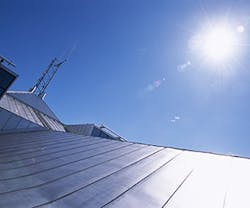Repairing a Roof After a Storm
Replacing or doing large repairs on an existing roof can be a nightmare for facility managers. The costs are high. The time is significant. And between dealing with manufacturers, inspectors, and contractors, it can be a very overwhelming undertaking.
But maintaining a roof must be done. Especially after weather events like windstorms, rain, fire, hail, ice, and snow, which accounted for an average of $21.8 billion dollars in insured property losses annually from 2003–2012.
The RICOWI Best Practice Roofing Guide, provided by Insurance Institute for Business & Home Safety (IBHS) makes it easier to determine whether a roof should be repaired or replaced.
“Particularly following a bad storm, home and business owners can receive a significant amount of information about the condition of their roof from inspectors, contractors, insurance adjusters and even friends and neighbors,” says Joan Cook, RICOWI executive director. “Our goal is to provide a clear summary of the available information on best practices and create consistent guidance from a variety of professionals. Simply put, we want to eliminate confusion for roof owners and ensure that best practices are widely known and followed.”
The new guide was created in cooperation with manufacturers, roofing consultants, inspectors and insurers. The manual contains key information about roof product manufacturing and product identification. Because it is electronic, this material can and will be updated periodically as new information becomes available, and as products and building codes change.
“The roof is a home or business’s first and most important line of defense against severe weather events. Getting the roof right is incredibly important to the integrity, durability and resilience of the entire structure,” Julie Rochman, president and CEO of IBHS. “The RICOWI web-based resource guide should be the primary go-to reference for anyone considering a new roof, as well as professionals in the roofing industry. It will help roof owners understand the extent of damage to their roof, and how to proceed with next steps to obtain a strong, resilient roof.
The RICOWI Best Practice Roofing Guide is available to read for free on the IBHS website.
